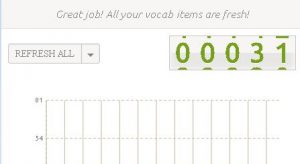As a member of the National Museum of Language, you are already a dedicated member of our organization, providing opportunities for the speaker series, exhibits, and our return to a physical space. But did you know that your membership can also benefit you directly with Transparent Language?
With Transparent Language, you can brush up on old skills, learn some new phrases for a vacation, or take a deep dive into a language you haven’t had the opportunity to learn before, all included with your membership!
What is Transparent Language?
Transparent Language is a software program designed for use by government, professionals, and more, using the latest methodology and pedagogy to ensure that not only do you gain exposure to the language, but to also learn and maintain knowledge. Over 100 languages are available, including regional variations.
What Sets TL Apart?
The biggest difference in TL compared to other language-learning services is the amount of resources and high-quality pedagogy. As mentioned, TL uses the latest in methodology to deliver a quality experience, and more importantly offers opportunities for language learners of all levels to interact with the language in an authentic way. Students are able to hear native speakers from several dialects, get grammar explanations, explore culture, and more. Students are able to review past learning, skip what they already know, and focus on what they need. For example, an NML member, Dr. Lois M. Feurle of the Oregon Society of Translators and Interpreters, used TL before a trip to Azerbaijan, and informed us she has highly enjoyed and recommends the program.
Authenticity is key for TL. In addition to native speakers, there is cultural immersion, explaining the habits and culture of the language, which is also used as an opportunity to practice the language. And to help recreate the speaking experience, TL utilizes software that helps the learner practice their accent against a virtual native speaker, giving immediate visual feedback and helping them practice speaking when a native speaker is not present. Speaking is also practiced via simulated conversations, which can also be recorded for future playback.
Another benefit comes from the ability to customize the intensity of learning. For example, unlike many other language-learning services, for languages that use a non-Latin alphabet, there is the choice of the “transliterated method,” using transliterations into the Latin alphabet or the “traditional method,” also learning the symbols and writing systems of other languages. This way, the learner can decide what’s best for them; for example, a government employee being stationed in a foreign language will of course benefit from familiarizing themselves with the written language, but for a person that is travelling and looking to be able to speak with natives, the transliterated language will be a good start to help them immerse once in the country.

An example of seeing Latin text and original Japanese characters; notice the grammar point on the side too
My Personal Experience
For personal research, I tested TL myself, once for Spanish (the language I teach) and Japanese, both traditional learning and transliterated, as I will be traveling there over the summer. Both languages are expertly presented, with plenty of grammar explanations and authentic practice. For a language you already speak, you are allowed to “test out” and focus on what you want to focus on, doing modules out of order or skipping them entirely. For learning a new language, you can keep track of your progress through a count of words learned and refreshing of material including the option to quickly cycle through words before they become “stale”

My progress in Japanese after a few days
Spanish and Japanese both provided a pedagogically appropriate deep dive into the language, introducing the language through conversation and context before pulling back to discuss grammar points, giving students an immediate example of how to use their learning.
Initially starting Japanese through traditional learning, which involved a study of kana, I ended up switching over to transliterated as I knew I would mostly be speaking when in Japan, another example of the customized learning. Both provided the same content in the initial modules just in a more intense setting for the traditional learning.
How Do I Sign Up?
The easiest way to gain access to TL is through a membership with NML! Please just inform us of your interest and we will send you a code to join. Just another fantastic benefit of joining our museum!
